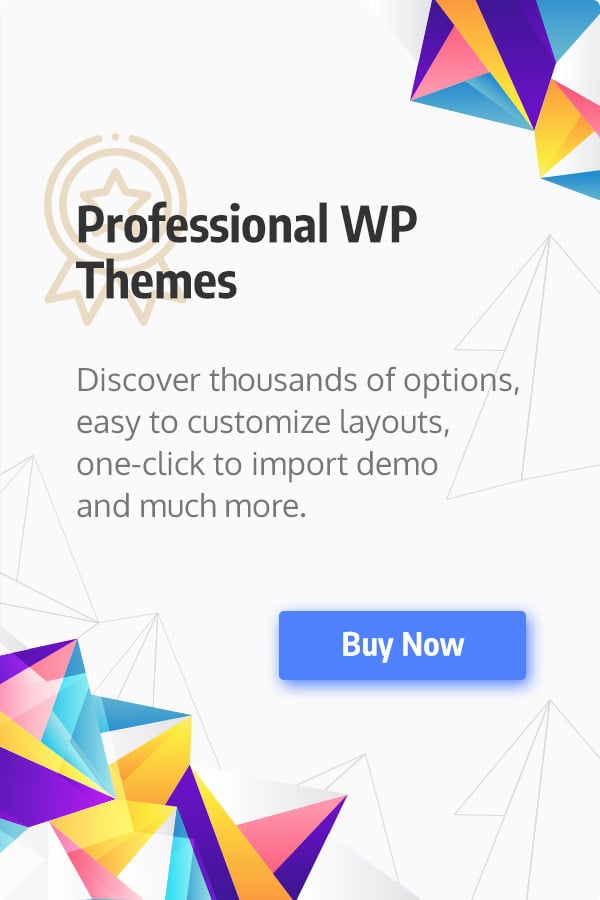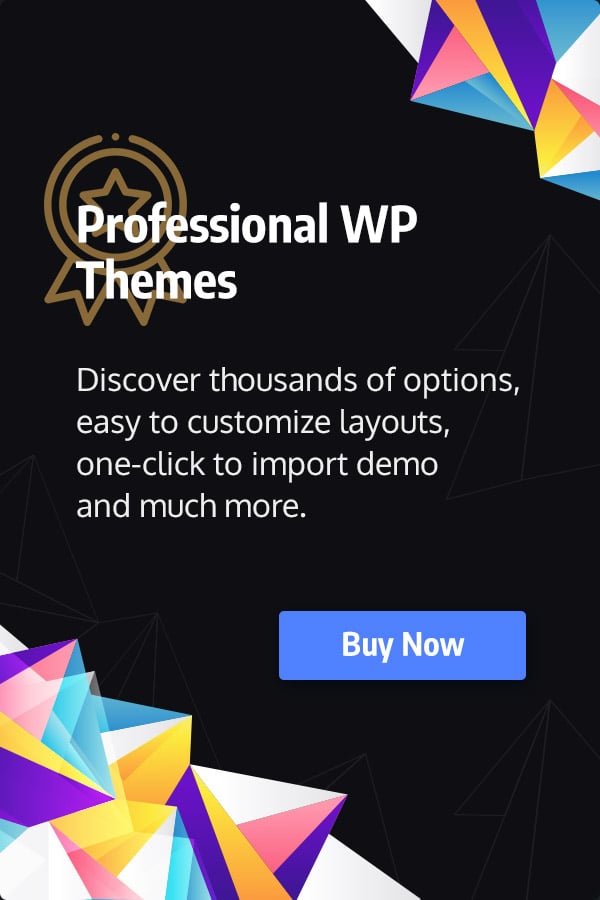Crafting Compelling Content Headlines
A headline is the gatekeeper to your content. In an age saturated with information, it serves as the initial, often sole, determinant of whether a reader will invest their precious time. More than just a title, a compelling headline is a meticulously engineered promise, an invitation, and a strategic lure designed to capture attention and compel action. Its efficacy is paramount, directly influencing click-through rates, engagement metrics, and ultimately, the reach and impact of your message. Without an effective headline, even the most profound, insightful, or meticulously researched content risks remaining unseen, a digital whisper in a cacophony of online voices. It is the crucial first impression, a micro-advertisement for the macro piece of content it represents.
The Foundational Psychology Behind Headline Effectiveness
Effective headlines are not born from random inspiration; they are products of an understanding of human psychology. Tapping into fundamental cognitive biases and emotional triggers is key to creating headlines that resonate deeply and drive action.
1. The Curiosity Gap Theory:
Pioneered by Carnegie Mellon professor George Loewenstein, the curiosity gap theory suggests that curiosity arises when there is a perceived gap between what we know and what we want to know. A compelling headline exploits this gap, hinting at valuable information or a surprising revelation without fully disclosing it. It promises resolution to an intriguing enigma.
- Mechanism: It creates a state of information deprivation, making the brain crave the missing pieces. This craving is a powerful motivator for clicking.
- Application: Use phrases like “The Secret To…”, “What You Don’t Know About…”, “Why Experts Are Wrong About…”, or “You Won’t Believe What Happened Next…”. The key is to offer just enough information to pique interest but not enough to satisfy it.
- Example: “The One Undeniable Truth About Financial Freedom That No One Tells You.”
2. Emotional Triggers:
Human beings are inherently emotional creatures. Headlines that evoke strong emotions tend to be more memorable and shareable. The goal is to connect with the reader on a visceral level, bypassing logical barriers.
- Joy/Aspiration: Headlines that promise positive outcomes, fulfillment, or solutions to problems.
- Example: “Unlock Your Full Potential with These 5 Productivity Hacks.”
- Fear/Loss Aversion: Highlighting potential negative consequences or what the reader stands to lose by not engaging. Fear of missing out (FOMO) is a potent variant.
- Example: “Are You Making These 3 Costly Mistakes in Your Retirement Planning?”
- Anger/Frustration: Tapping into shared grievances or injustices, often seen in news or opinion pieces.
- Example: “The Outrageous Reason Your Bills Keep Rising (And What You Can Do).”
- Surprise/Novelty: Presenting unexpected information, a paradigm shift, or a counter-intuitive truth.
- Example: “Scientists Just Discovered a New Planet Where It Rains Diamonds.”
- Trust/Authority: Building credibility by leveraging expert opinion, data, or established institutions.
- Example: “Harvard Study Reveals The Simplest Way to Boost Brain Health.”
- Empathy/Connection: Addressing shared experiences or feelings, making the reader feel understood.
- Example: “You’re Not Alone: Battling Imposter Syndrome in a Competitive World.”
3. Urgency and Scarcity:
These principles leverage the human tendency to value things more when they are perceived as scarce or available for a limited time.
- Urgency: Creating a sense of immediate need or impending deadline.
- Example: “Last Chance: Save 50% on Our Premium Course – Offer Ends Tonight!”
- Scarcity: Implying limited availability of a resource, opportunity, or insight.
- Example: “Only 7 Spots Left: Exclusive Masterclass on AI Content Creation.”
4. Social Proof:
People are influenced by the actions and opinions of others, especially those they respect or relate to. Headlines can leverage this by indicating popularity, endorsements, or testimonials.
- Mechanism: Provides validation and reduces perceived risk. If others are benefiting, so can I.
- Application: Use numbers (e.g., “Join 10,000+ Satisfied Customers”), testimonials, or references to experts/influencers.
- Example: “The Strategy 7-Figure Entrepreneurs Swear By for Explosive Growth.”
5. Personal Relevance:
Headlines that directly address the reader’s needs, problems, or aspirations are incredibly effective. The more tailored the headline feels, the more likely it is to capture attention.
- Mechanism: Triggers the “What’s in it for me?” question, providing an immediate answer.
- Application: Use second-person pronouns (“You,” “Your”), address specific demographics, or frame the content as a direct solution to a common pain point.
- Example: “Is Your Small Business Missing Out on These Lucrative Grants?”
Key Elements of an Effective Headline
Beyond psychological triggers, specific structural and linguistic elements contribute to a headline’s effectiveness.
1. Clarity and Specificity:
A headline must be immediately understandable, leaving no room for ambiguity. Specificity adds credibility and sets clear expectations. Vague headlines confuse and fail to communicate value.
- Good: “How to Reduce Your Energy Bills by 20% This Winter”
- Bad: “Save Money Now”
2. Benefit-Driven:
The most crucial element. A headline should clearly articulate what the reader will gain or what problem the content will solve. It answers the fundamental question: “What’s in it for me?”
- Good: “Master Public Speaking: Conquer Stage Fright and Captivate Any Audience”
- Bad: “Public Speaking Tips”
3. Uniqueness and Novelty:
In a crowded digital landscape, standing out is essential. A unique angle, a fresh perspective, or a surprising claim can differentiate your content. Avoid generic, overused phrases.
- Good: “The Counter-Intuitive Habit That Doubled My Productivity in a Week”
- Bad: “Productivity Habits to Try”
4. Urgency or Timeliness (When Applicable):
For news, limited offers, or rapidly evolving topics, incorporating a sense of urgency or timeliness can compel immediate action.
- Good: “New AI Regulations Just Dropped: What They Mean for Your Business Today”
- Bad: “AI Regulations”
5. Conciseness (with exceptions):
While not always about brevity, a headline should convey its message efficiently. Every word should earn its place. However, some SEO-driven or descriptive headlines can be longer if they add value and readability.
- Good: “Streamline Your Workflow: 7 Apps That Will Transform Your Productivity” (10 words)
- Bad: “Here are some of the applications that you might find helpful if you are trying to be more productive and organize your work life better and generally get more done.” (28 words)
6. Keyword Integration (for SEO):
For discoverability, relevant keywords must be naturally embedded within the headline, especially if the content is designed to rank in search engines. This helps search engines understand the content’s topic and match it with user queries.
- Good: “Best Vegan Protein Powder: A Comprehensive Guide for Muscle Growth” (targets “vegan protein powder”)
- Bad: “Boost Your Gains Naturally” (too vague for search)
7. Call to Action (Implicit or Explicit):
While not always an explicit “Click here!”, a compelling headline implicitly (or explicitly) prompts the reader to engage with the content. It promises a solution or an answer that requires a click.
- Good: “Discover How to Write Headlines That Convert: Your Ultimate Guide” (implicit CTA to discover)
- Bad: “About Headlines”
Types of Compelling Headlines (with Examples and Analysis)
Understanding different headline archetypes can provide a versatile toolkit for content creators. Each type serves a specific purpose and appeals to different aspects of human psychology.
1. Question Headlines:
- Structure: Pose a direct question relevant to the reader’s needs, pain points, or curiosity.
- Psychology: Engages the reader immediately, prompting self-reflection and a desire for an answer. Directly addresses existing queries in the reader’s mind.
- Pros: Highly engaging, encourages mental involvement, can mirror search queries.
- Cons: Can sometimes be too open-ended if not specific enough, might not clearly state the benefit.
- Examples:
- “Are You Unlocking Your Content’s Full SEO Potential?” (Problem-focused)
- “What’s the Secret to Achieving Financial Freedom by 40?” (Benefit-focused)
- “Why Is Your Dog Suddenly Ignoring Its Food?” (Pain point, specific)
- “Can Artificial Intelligence Truly Replace Human Creativity?” (Thought-provoking, debated topic)
- Analysis: These work by activating the reader’s pre-existing questions or creating new ones. They set up the content as the definitive answer. Ensure the question is one your target audience is genuinely asking.
2. How-To/Guide Headlines:
- Structure: Start with “How to,” “Guide to,” “Steps to,” or similar phrases, followed by a clear, benefit-driven outcome.
- Psychology: Appeals to the human desire for self-improvement and problem-solving. Promises practical, actionable solutions.
- Pros: Excellent for educational content, highly searchable, clearly states the value proposition.
- Cons: Can be generic if not specific enough, might imply complexity if not framed as “easy” or “simple.”
- Examples:
- “How to Master Time Management and Boost Productivity in Just 7 Days”
- “The Ultimate Guide to Starting a Successful E-commerce Business from Scratch”
- “Simple Steps to Baking the Perfect Sourdough Loaf Every Time”
- “How to Write an Effective Cold Email That Gets a Response (Without Being Spammy)”
- Analysis: These are evergreen and highly effective because they promise direct instruction and tangible results. Specificity in the outcome and timeframe enhances their appeal.
3. Listicle Headlines:
- Structure: Use a number followed by a compelling descriptor, then the topic. “X Ways to…”, “X Reasons Why…”, “X Strategies for…”.
- Psychology: Our brains love numbers because they imply organization, specificity, and finite consumption. They promise digestible, easy-to-scan information.
- Pros: Highly shareable, easy to scan, sets clear expectations of content length and structure, often perform well in search and social media.
- Cons: Can be overused, leading to content fatigue if not genuinely valuable; some perceive them as “light” content.
- Examples:
- “7 Surprising Benefits of Daily Meditation You Never Knew”
- “10 Essential Tools Every Remote Worker Needs to Thrive”
- “5 Costly SEO Mistakes Small Businesses Make (And How to Fix Them)”
- “21 Delicious Vegan Dinner Recipes Ready in Under 30 Minutes”
- Analysis: Numbers provide a concrete promise of value. Odd numbers often perform slightly better than even numbers, and larger numbers can sometimes imply more comprehensive content, but only if the content delivers.
4. Benefit-Driven Headlines:
- Structure: Focus entirely on what the reader will gain or how their life will improve.
- Psychology: Directly addresses the “What’s in it for me?” question, appealing to self-interest and desire for positive change.
- Pros: Very persuasive, clearly communicates value, broad appeal.
- Cons: Can be too generic if not specific enough about the benefit.
- Examples:
- “Unlock Financial Freedom: Strategies for Building Passive Income Streams”
- “Boost Your Energy Levels Naturally: A Guide to Holistic Wellness”
- “Write Engaging Content That Converts: Your Blueprint for Digital Success”
- “Achieve Radiant Skin: The Definitive Guide to a Flawless Complexion”
- Analysis: These headlines cut straight to the chase, promising a desired outcome. They are powerful because they speak directly to the reader’s aspirations and pain points.
5. News/Announcement Headlines:
- Structure: Focus on novelty, discovery, or recent developments. Use words like “New,” “Breaking,” “Just Released,” “Discovery,” “First Look.”
- Psychology: Appeals to our innate desire to stay informed, to be among the first to know, and to understand current events.
- Pros: Timely, generates immediate interest, great for current affairs and industry updates.
- Cons: Short shelf-life, can quickly become outdated.
- Examples:
- “Breaking: Google Unveils Major Algorithm Update – What It Means for Your Rankings”
- “New Study Reveals Shocking Link Between Diet and Mental Health”
- “First Look: Apple’s Revolutionary AR Headset Unveiled”
- “Just Released: The 2024 State of Digital Marketing Report”
- Analysis: These headlines thrive on freshness and relevance. They are designed to create a sense of urgency to consume the information before it becomes old news.
6. Command/Direct Action Headlines:
- Structure: Begin with a strong verb, telling the reader what to do or what the content will help them do.
- Psychology: Assertive, confident, and provides clear direction. Appeals to those seeking direct solutions or guidance.
- Pros: Clear, concise, persuasive, implies authority.
- Cons: Can be perceived as aggressive if not balanced with benefit.
- Examples:
- “Stop Wasting Money: Cut Your Subscription Bills Today!”
- “Master Your Budget: Simple Steps to Financial Control”
- “Transform Your Sales Strategy with These Proven Techniques”
- “Boost Your Website Traffic: Implement These 7 SEO Tactics Now”
- Analysis: These are effective for content that offers immediate, actionable advice. They clearly state the purpose of the content.
7. Curiosity-Driven/Intrigue Headlines:
- Structure: Hint at a surprising fact, a mystery, or an unexpected twist without giving away the full story.
- Psychology: Directly leverages the curiosity gap, creating an irresistible urge to click and discover the hidden information.
- Pros: Extremely high click-through potential, can be highly viral.
- Cons: Risk of being perceived as clickbait if the content doesn’t deliver on the promise; can sometimes be vague for SEO.
- Examples:
- “The Shocking Truth About Your Daily Coffee Habit”
- “What Happened When I Tried Waking Up at 4 AM for a Month”
- “This One Simple Change Revolutionized My Morning Routine”
- “You Won’t Believe What This Company Did to Dominate Its Niche”
- Analysis: These must deliver on their promise. The content must fulfill the intrigue, or readers will feel cheated, damaging trust.
8. Controversial/Debate Headlines:
- Structure: Present a provocative statement, challenge a common belief, or highlight a polarizing viewpoint.
- Psychology: Appeals to our desire for intellectual stimulation, debate, and sometimes, a sense of belonging to a particular viewpoint (or opposition to another). Generates strong emotional responses.
- Pros: High engagement, sparks discussion, can go viral quickly.
- Cons: Can alienate some readers, might attract negative comments if not handled thoughtfully, risks misinterpretation.
- Examples:
- “Is Remote Work Really More Productive? The Uncomfortable Truth”
- “Why Most Self-Help Books Are Lying To You About Success”
- “The Myth of Work-Life Balance: Why It’s Holding You Back”
- “Traditional Marketing Is Dead: Here’s Why You Need to Adapt Now”
- Analysis: Use with caution. While effective for engagement, ensure the content provides a well-reasoned argument rather than just sensationalism.
9. Testimonial/Social Proof Headlines:
- Structure: Incorporate quotes, statistics, or references to influential figures/groups to lend credibility.
- Psychology: Leverages the power of social proof and authority, convincing readers that others have benefited or that the information is validated.
- Pros: Builds trust, enhances credibility, very persuasive.
- Cons: Requires actual testimonials or data to back up the claim.
- Examples:
- “The Productivity Hack That Helped Mark Cuban Scale His Empire”
- “Join 10,000+ Entrepreneurs Who Transformed Their Businesses with This Strategy”
- “Customers Say This Is the Easiest Way to Learn a New Language”
- “Rated 5 Stars: Why This SEO Tool Is a Game-Changer for Agencies”
- Analysis: Powerful for products, services, or advice where external validation is key.
10. Problem/Solution Headlines:
- Structure: Clearly state a common problem your audience faces, then immediately promise a solution within the content.
- Psychology: Directly addresses pain points and offers relief, appealing to a fundamental human desire to overcome challenges.
- Pros: Highly relevant, speaks directly to the reader’s needs, often performs well in search for problem-based queries.
- Cons: Can be negative if only the problem is highlighted without a clear promise of solution.
- Examples:
- “Struggling with Writer’s Block? Here’s Your Ultimate Creativity Boost.”
- “Overwhelmed by Digital Marketing? Simplify Your Strategy with This Blueprint.”
- “Tired of Low Website Traffic? Discover Proven Strategies to Skyrocket Your Visitors.”
- “Facing Burnout? Reclaim Your Energy with These Restorative Practices.”
- Analysis: These are incredibly effective because they identify with the reader’s struggles and position the content as the answer.
11. Scarcity/Urgency Headlines:
- Structure: Imply limited availability, time-sensitive offers, or exclusive access.
- Psychology: Triggers fear of missing out (FOMO) and the human tendency to value things more when they are scarce.
- Pros: Drives immediate action, effective for promotions and limited content releases.
- Cons: Must be genuine to maintain trust; overuse can desensitize the audience.
- Examples:
- “Limited-Time Offer: Get Our Premium SEO Course Before It’s Gone Forever!”
- “Enrollment Closes Tomorrow: Don’t Miss Out on This Exclusive Masterclass.”
- “Only 5 Copies Left: Secure Your Signed Edition of ‘The Digital Nomad Handbook’.”
- “Flash Sale Ends in 24 Hours: Grab Your Discount Now!”
- Analysis: Best used sparingly and truthfully. Their power comes from creating a genuine sense of immediacy.
12. Intrigue with Numbers/Data Headlines:
- Structure: Combine a surprising number or statistic with an intriguing statement.
- Psychology: Numbers add credibility and specificity, while the intrigue part activates curiosity. People are drawn to concrete data.
- Pros: Highly shareable, credible, effective for data-driven content.
- Cons: Requires accurate data; if the number is not genuinely surprising, it might fall flat.
- Examples:
- “The 90% Failure Rate of Startups: What No One Tells You About Success”
- “Only 2% of People Know This Simple Trick to Double Their Reading Speed”
- “How a Single Email Increased Our Sales by 300% in One Month”
- “The Shocking Stat That Proves Your Marketing Funnel Is Broken”
- Analysis: This type of headline works by providing a strong, specific hook. The number makes the claim feel tangible and verifiable.
13. Emotional Headlines:
- Structure: Use powerful adjectives and verbs to evoke a strong feeling (joy, anger, fear, surprise, inspiration).
- Psychology: Connects with readers on a deeper, more primitive level, bypassing rational thought. Highly memorable.
- Pros: High engagement, increases shareability, creates strong brand recall.
- Cons: Can be perceived as manipulative if overused or disingenuous.
- Examples:
- “Experience Pure Joy: The Unforgettable Travel Destinations of 2024”
- “The Heartbreaking Truth About Animal Cruelty and How You Can Help”
- “Ignite Your Passion: Rediscover Your Purpose in Life”
- “Unleash Your Inner Genius: A Blueprint for Creative Breakthroughs”
- Analysis: These headlines resonate because they speak directly to the human condition and our shared emotional experiences.
14. Comparison Headlines:
- Structure: Directly compare two or more entities (products, methods, ideologies). Use “vs.,” “compared to,” “better than,” etc.
- Psychology: Appeals to the reader’s desire for informed decision-making and simplification of complex choices.
- Pros: Highly effective for reviews, product comparisons, or evaluating different approaches; helps readers make choices.
- Cons: Requires balanced and fair analysis within the content to maintain credibility.
- Examples:
- “WordPress vs. Squarespace: Which Platform is Right for Your Business?”
- “Organic SEO vs. Paid Ads: Where Should Your Marketing Budget Go?”
- “MacBook Air M3 vs. M2: A Deep Dive into Performance Differences”
- “Traditional Publishing vs. Self-Publishing: Pros and Cons for Aspiring Authors”
- Analysis: These headlines provide immediate context and promise to help the reader navigate choices, positioning the content as a definitive guide.
Strategic Headline Crafting Techniques
Crafting truly compelling headlines goes beyond understanding types; it involves strategic application of various techniques, continuous testing, and leveraging available tools.
1. The 4 U’s Formula:
A classic copywriting formula for headlines, the 4 U’s provide a robust framework:
- Useful: Does it offer a clear benefit or solution to a problem?
- Urgent: Does it create a sense of immediate need or timeliness? (Not always applicable, but powerful when it is).
- Unique: Does it offer something new, unexpected, or a fresh perspective?
- Ultra-Specific: Does it provide enough detail to be compelling and credible?
- Application: Evaluate your headline against each ‘U’. The more ‘U’s it satisfies, the stronger it typically is.
- Example: “Achieve Ultra-Fast Load Times: The Unique, Urgent Strategy That Boosted Our Site Speed by 70% in Just One Week.” (Useful, Urgent, Unique, Ultra-Specific)
2. Power Words:
These are evocative, emotional, and persuasive words that trigger a psychological or emotional response. They add punch and impact to your headlines.
- Examples:
- Fear/Urgency: Instant, Danger, Warning, Secret, Breakthrough, Now, Limited, Urgent, Risk, Eliminate, Avoid, Last Chance.
- Desire/Benefit: Discover, Unleash, Master, Boost, Transform, Skyrocket, Ultimate, Easy, Simple, Proven, Guaranteed, Free, Exclusive, Captivate, Revolutionary.
- Curiosity/Intrigue: Shocking, Unbelievable, Hidden, Secret, Confessions, Exposed, Bizarre, Odd, Surprising, Untold.
- Application: Sprinkle power words judiciously to amplify the emotional resonance and persuasive power of your headline. Don’t overdo it, or it can sound manipulative.
3. Number Usage for Specificity and Value:
Numbers in headlines significantly increase click-through rates because they promise specificity, organization, and a clear scope of information.
- Mechanism: People perceive numbers as concrete data points, indicating that the content is well-structured and provides distinct takeaways.
- Application:
- Odd Numbers: Often perform slightly better (e.g., “7 Ways,” “9 Secrets”).
- Digits vs. Words: Using numerals (e.g., “7” instead of “seven”) stands out more in a line of text.
- Large Numbers: Can imply comprehensive coverage (e.g., “101 Tips for…”).
- Specific Percentages/Amounts: Add credibility and tangible value (e.g., “Reduce Costs by 30%”).
- Example: “17 Actionable Strategies to Double Your Website Traffic in 90 Days.”
4. A/B Testing (Split Testing):
The most reliable way to determine which headlines resonate best with your audience.
- Process: Create two or more different headlines for the same piece of content. Show each headline to a segment of your audience (e.g., via email subject lines, PPC ads, or website variants). Measure key metrics like click-through rate (CTR), engagement, or conversion.
- Tools: Google Optimize (deprecated, moving to GA4), Optimizely, VWO, or built-in A/B testing features in email marketing platforms.
- Benefit: Provides data-driven insights into what truly works, moving beyond assumptions. It allows for continuous optimization and improved performance over time.
5. Competitor Analysis:
Study the headlines used by successful competitors or leading publications in your niche.
- What to Look For:
- Common Themes: What types of problems do they solve? What benefits do they promise?
- Successful Formats: Do they primarily use listicles, how-to guides, or question-based headlines?
- Power Words: What specific words or phrases do they frequently employ?
- Engagement Metrics: If publicly available, observe which of their headlines generate the most shares or comments.
- Caution: Don’t plagiarize. Use competitor analysis as inspiration to understand market preferences and identify opportunities for differentiation.
6. Understanding Your Target Audience:
Tailoring your headline to the specific demographics, psychographics, pain points, and aspirations of your audience is non-negotiable.
- Language: Use terminology they understand and resonate with. Avoid jargon if your audience is general; use industry-specific terms if targeting experts.
- Pain Points: Directly address the frustrations, challenges, or obstacles your audience faces.
- Aspirations: Speak to their dreams, goals, and desired outcomes.
- Buyer Persona: If you have developed buyer personas, refer to them. What are their specific needs and how does your content meet them?
- Example (for B2B audience): “Streamline Your Enterprise Sales Funnel: The CRM Integrations Driving 25% More Leads.”
- Example (for millennial personal finance audience): “Ditch Your Debt: 5 Smart Money Moves for Under 30s.”
7. SEO Considerations for Headlines (Title Tags & H1s):
While compelling for humans, headlines also need to be optimized for search engines.
- Keyword Placement: Include your primary target keyword(s) naturally, preferably near the beginning of the title. This helps search engines understand the topic.
- Length:
- Title Tags (for SERPs): Aim for 50-60 characters (approx. 500-600 pixels) to avoid truncation in Google search results. This is what appears in the browser tab and search results.
- H1 Headlines (on-page): Can be longer and more descriptive than title tags, as they are for the reader once they land on the page. They should clearly state the page’s main topic.
- Readability: Search engines favor clear, concise, and easy-to-read headlines. Avoid keyword stuffing.
- Search Intent: Design headlines that match the intent behind common search queries (informational, navigational, commercial, transactional).
8. Brand Voice Consistency:
Your headlines should reflect your brand’s overall voice and personality – whether it’s humorous, authoritative, empathetic, formal, or casual. Consistency builds brand recognition and trust.
- Application: If your brand is known for being quirky, let that shine through. If you’re a serious financial institution, maintain a professional tone.
9. Mobile Responsiveness:
A significant portion of web traffic comes from mobile devices. Ensure your headlines are easily readable and not truncated on smaller screens.
- Consideration: Shorter, punchier headlines often work better for mobile display, though longer ones can be handled if structured well with clear value propositions upfront.
10. Readability Metrics:
Tools like the Flesch-Kincaid readability test can assess the complexity of your language. Aim for a reading level appropriate for your target audience. Simpler language in headlines often means broader appeal.
11. Tools for Headline Generation and Analysis:
Leverage technology to brainstorm, analyze, and optimize your headlines.
- CoSchedule Headline Analyzer: Provides a score based on various factors like word balance, headline type, emotional words, and length. Offers suggestions for improvement.
- Sharethrough Headline Analyzer: Focuses on engagement and impression scores, suggesting ways to improve clarity and impact.
- Portent’s Content Idea Generator: Provides creative, often quirky, headline ideas by filling in keywords. Great for brainstorming when stuck.
- AnswerThePublic: Visualizes common questions and prepositions related to a keyword, helping you discover pain points and curiosity gaps for question-based headlines.
- Google Keyword Planner / SEMrush / Ahrefs: Essential for keyword research to identify high-volume, relevant keywords to incorporate naturally into your headlines.
- Thesaurus/Rhyming Dictionary: For finding powerful synonyms and creative wordplay.
Advanced Headline Optimization
Optimizing headlines extends beyond the primary article title, encompassing various touchpoints where your content makes an impression.
1. Beyond the Title Tag: H1s, Internal Headlines, Social Media Headlines, Email Subject Lines:
Each platform and context demands a slightly different headline approach, even for the same piece of content.
- H1 Heading (On-Page): This is the main heading on your content page. It should be highly descriptive and clearly state the page’s topic. While often similar to the title tag, it can be longer and more reader-focused, as it doesn’t have the same character limits for SERP display. It’s crucial for on-page SEO and user experience.
- Internal Headlines (H2, H3, etc.): These break up your content into digestible sections. They should be clear, concise, and benefit-driven, guiding the reader through the article and indicating what each section covers. They also help SEO by providing structure and allowing for sub-keyword targeting.
- Social Media Headlines: Often shorter, more emotional, and highly engaging to grab attention in a fast-scrolling feed. May include emojis, hashtags, or specific calls to action relevant to the platform. They might prioritize virality over explicit SEO keywords.
- Example: (For an article titled “The Ultimate Guide to Remote Work Productivity”)
- Facebook: “Struggling with WFH burnout? 🤯 These 7 hacks will TRANSFORM your remote productivity! #RemoteWork #ProductivityTips”
- Twitter: “WFH got you drained? ⚡️ Unlock peak productivity with these 7 game-changing tips. Read now! #WorkFromHome”
- Example: (For an article titled “The Ultimate Guide to Remote Work Productivity”)
- Email Subject Lines: Designed purely for open rates. They must be concise, create urgency or curiosity, or offer a clear benefit. Personalization, emojis, and A/B testing are critical here.
- Example: (For the same remote work article)
- “Your Remote Productivity Blueprint Awaits! ✨”
- “Don’t Miss Out: 7 Hacks for WFH Success”
- “Struggling with Remote Work? Read This.”
- Example: (For the same remote work article)
2. Snippet Optimization (Meta Descriptions & Rich Snippets):
While not directly the headline, these elements appear alongside your headline (title tag) in search results and significantly influence click-through rates.
- Meta Descriptions: A concise summary (around 150-160 characters) of your content. While not a direct ranking factor, a compelling meta description acts as a secondary headline, enticing users to click. Include keywords and a clear value proposition.
- Rich Snippets: Enhanced search results that display additional information (e.g., star ratings, images, pricing, recipes, event dates). They make your search listing stand out dramatically, improving visibility and CTR. Headlines can prime users for these visual cues.
- Schema Markup: Implementing structured data (schema markup) tells search engines exactly what your content is about, enabling them to display rich snippets. For example, using “Article” schema can help search engines better understand your content, making it eligible for enhanced display.
3. Voice Search Considerations:
As voice search grows, headlines need to consider natural language queries. People speak differently than they type.
- Application: Think about how someone would verbally ask a question related to your content. Your headline (and content) should answer that question directly and conversationally.
- Example: Instead of “SEO Best Practices,” consider “What Are the Best SEO Practices for Small Businesses in 2024?” or “How Can I Improve My Website’s Search Ranking?”
4. E-A-T (Expertise, Authoritativeness, Trustworthiness):
Google’s E-A-T guidelines emphasize the importance of high-quality, credible content. Your headline can subtly convey these aspects.
- Expertise: Hint at in-depth knowledge or unique insights.
- Example: “The Advanced SEO Techniques Used by Top-Tier Agencies.”
- Authoritativeness: Reference industry leaders, research, or your own proven track record.
- Example: “Backed by Science: The Definitive Guide to Brain Health.”
- Trustworthiness: Promise transparency, honesty, or unbiased information.
- Example: “Unbiased Review: Is This the Best Project Management Software for Your Team?”
Common Headline Mistakes to Avoid
Even seasoned content creators can fall prey to common headline blunders that diminish impact and turn readers away. Avoiding these pitfalls is as crucial as mastering effective techniques.
1. Clickbait Without Delivery:
- Mistake: Creating a sensational, highly intriguing headline that promises something extraordinary but fails to deliver on that promise within the content. The content is underwhelming, irrelevant, or simply not as dramatic as the headline suggested.
- Consequence: Damages reader trust, increases bounce rate, reduces brand credibility, and leads to negative user experience signals for search engines.
- Avoidance: Always ensure your content genuinely fulfills the expectation set by your headline. Integrity is paramount. If your headline is “You Won’t Believe What Happened Next,” the content must provide a truly surprising twist.
2. Vagueness and Ambiguity:
- Mistake: Headlines that are too generic, unclear, or don’t convey a specific benefit or topic. They leave the reader confused about what the content offers.
- Consequence: Low click-through rates because readers don’t understand the value proposition. Wasted effort for content creators.
- Avoidance: Be specific. Use concrete nouns, strong verbs, and numbers. Clearly articulate the core message and the reader’s benefit.
- Vague: “Things to Know About Marketing”
- Specific: “7 Essential Digital Marketing Strategies to Boost Your Small Business Sales in 2024”
3. Over-Optimization / Keyword Stuffing:
- Mistake: Forcing too many keywords into a headline in an attempt to rank higher, making it sound unnatural, clunky, and unreadable for humans.
- Consequence: Poor user experience, reduced click-through rates, and potential penalties from search engines for manipulative practices.
- Avoidance: Integrate keywords naturally. Prioritize readability and human appeal over keyword density. One or two primary keywords, strategically placed, are usually sufficient.
- Stuffed: “Best SEO Tips Guide: SEO Marketing Strategy for SEO Ranking”
- Natural: “Master SEO: Your Guide to Proven Strategies for Higher Search Rankings”
4. Misleading Information:
- Mistake: Directly lying or grossly exaggerating the content’s claims in the headline. This is different from clickbait without delivery; this is outright deception.
- Consequence: Catastrophic damage to brand reputation, severe user backlash, and potential reporting to platforms if found egregious.
- Avoidance: Honesty is the best policy. Be truthful about what your content contains and promises. Build trust through accurate representation.
5. Lack of Benefit:
- Mistake: A headline that describes the content but fails to explain why the reader should care or what they will gain from engaging with it.
- Consequence: Low engagement because the “What’s in it for me?” question remains unanswered.
- Avoidance: Every headline should implicitly or explicitly communicate a benefit, a solution, or an answer to a burning question. Focus on the reader’s needs and desires.
- No Benefit: “Our Company’s New Product Release”
- Benefit: “Revolutionize Your Workflow: Discover Our New Product’s Time-Saving Features”
6. Typos and Grammatical Errors:
- Mistake: Simple spelling mistakes, grammatical errors, or punctuation issues in the headline.
- Consequence: Erodes credibility and professionalism. Readers might assume the content itself is of low quality if the headline is flawed.
- Avoidance: Proofread diligently. Use grammar checkers. A fresh pair of eyes can often spot errors you’ve overlooked. Quality control is essential for every aspect of your content.
7. Passive Voice or Weak Verbs:
- Mistake: Using passive sentence structures or weak, uninspiring verbs that don’t convey energy or action.
- Consequence: Headlines appear dull, lack impact, and fail to grab attention.
- Avoidance: Opt for active voice and strong, compelling verbs that convey dynamism and directness.
- Passive/Weak: “Progress was made on the project.”
- Active/Strong: “Accelerate Your Project Completion with These Smart Strategies.”
By understanding the psychological underpinnings, mastering diverse headline archetypes, applying strategic techniques, leveraging optimization tools, and rigorously avoiding common mistakes, content creators can consistently craft headlines that not only capture attention but also drive meaningful engagement and contribute significantly to their content’s success. The headline is more than just a title; it is the linchpin of digital content effectiveness.










